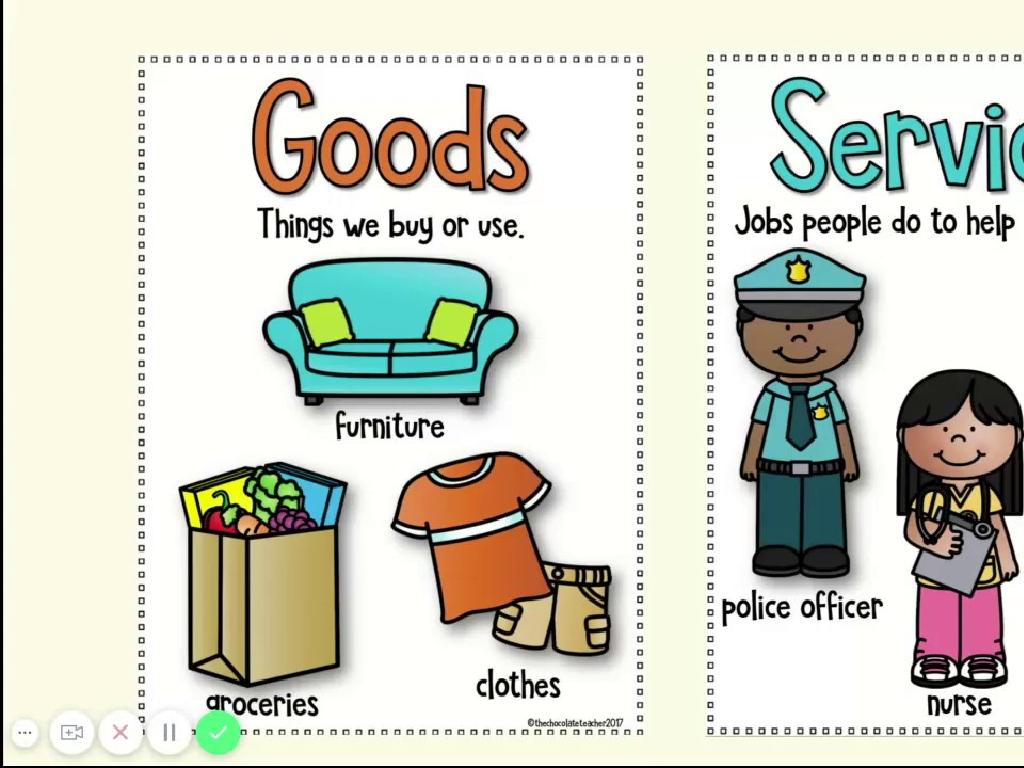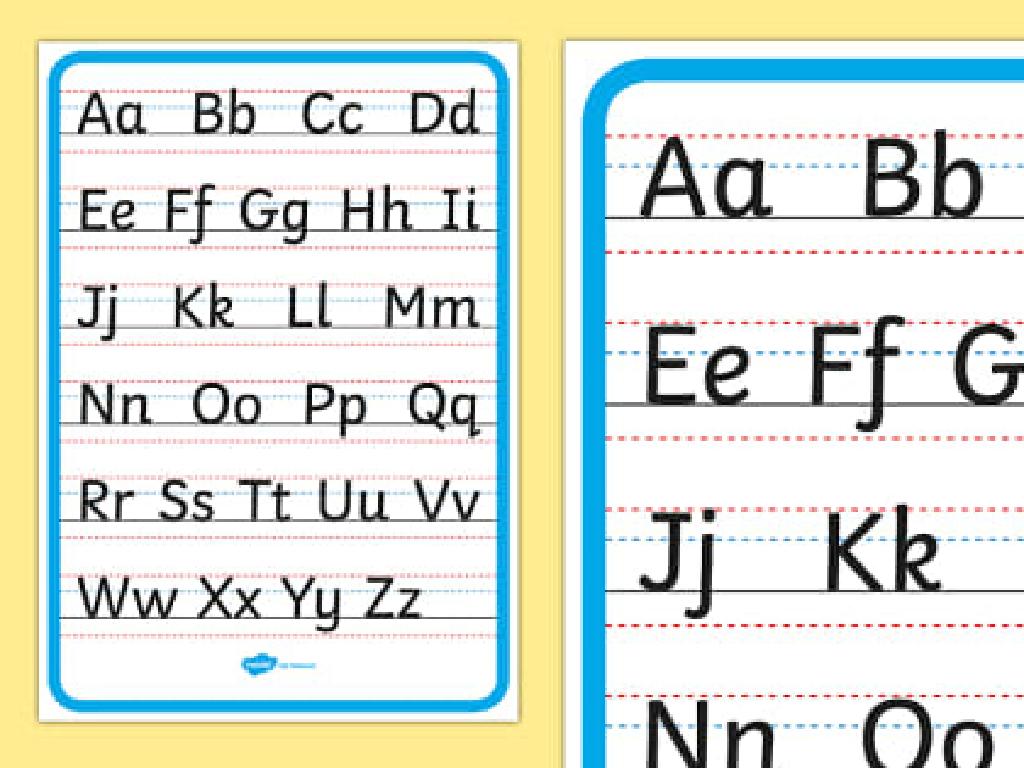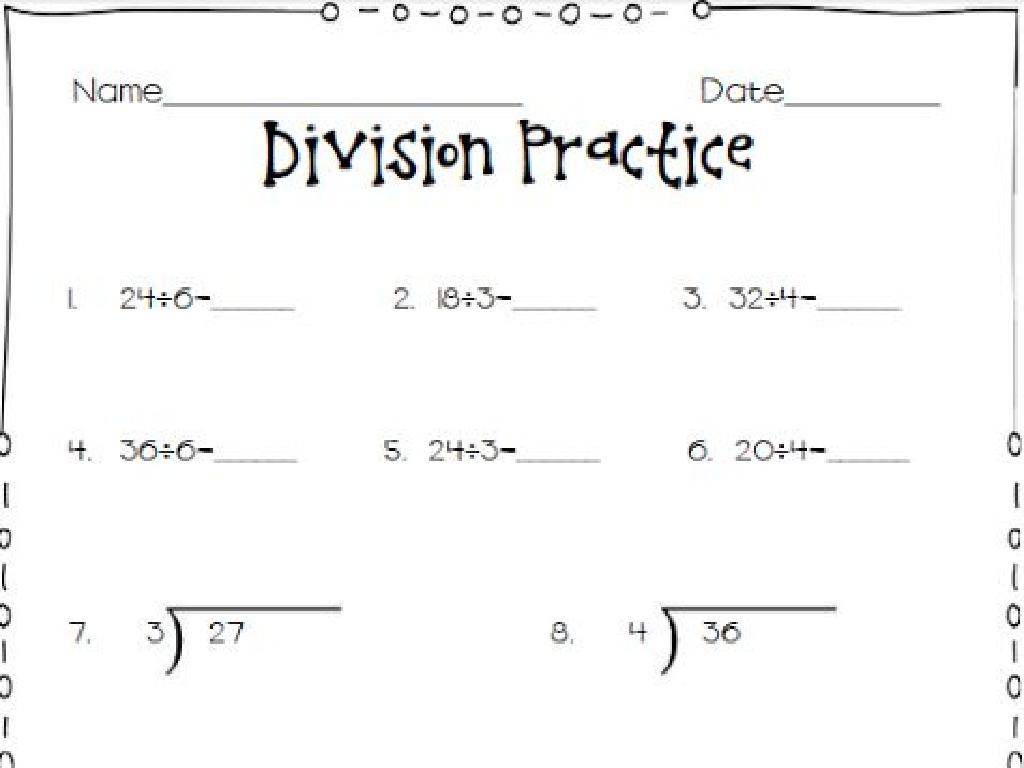Use Compensation To Add On A Number Line - Up To Two Digits
Subject: Math
Grade: Second grade
Topic: Addition Strategies: Two Digits
Please LOG IN to download the presentation. Access is available to registered users only.
View More Content
Welcome to Addition Strategies!
– Learn a cool way to add numbers
– Introduction to ‘compensation’
– Compensation means adjusting numbers to add more simply
– Making addition easier
– Like rounding numbers before adding, then fixing them
– Become an addition expert
|
This slide introduces second-grade students to the concept of compensation as a strategy for addition. Compensation involves adjusting numbers to make them easier to add together. For example, if adding 29 + 15, a student might round 29 up to 30, add it to 15 to get 45, and then subtract the 1 they added. This method simplifies the mental calculation process. Encourage students to think of compensation as a helpful tool in their math toolbox. During the lesson, provide several examples and guide students through the process step by step. Allow them to practice with peers and prepare simple exercises where they can apply compensation to add two-digit numbers.
Compensation Strategy in Addition
– Understanding compensation
– Compensation means adjusting numbers to add easily.
– Making numbers rounder
– Like turning 29 + 3 into 30 + 2 to add quickly.
– Trading for easier addition
– We ‘trade’ to get numbers that are simpler to work with.
– Using compensation on a number line
– This helps us visualize adding with jumps on a number line.
|
Compensation is a useful mental math strategy for second graders to simplify addition problems, especially when dealing with two-digit numbers. It involves adjusting one or both numbers to make a ‘friendlier’ number, such as a multiple of 10, which is easier to add mentally. For example, if the problem is 29 + 3, we can ‘compensate’ by turning it into 30 + 2. This makes it easier for students to visualize the addition on a number line by allowing them to make bigger, more intuitive jumps. During the lesson, demonstrate this concept with several examples and encourage students to practice this strategy with different number combinations. Provide opportunities for hands-on practice using number lines drawn on paper or available as classroom resources.
Adding with Number Lines
– What is a number line?
– A straight line with numbers at equal intervals.
– Visualizing number distances
– Shows how far apart numbers are.
– ‘Jumping’ to add numbers
– Move from one number to the next to add.
– Practice with two-digit addition
– Let’s add 23 + 15 using jumps on the number line.
|
This slide introduces the concept of a number line as a visual tool for understanding addition, especially with two-digit numbers. Explain that a number line can help us see how numbers are spaced and how we can ‘jump’ from one number to another to perform addition. Demonstrate with an example, such as adding 23 + 15, by showing how to make a big jump of 10 (to get to 33) and then a smaller jump of 5 to reach the final answer of 38. Encourage students to draw their own number lines and practice ‘jumping’ to add different two-digit numbers. This will help them grasp the concept of addition as a form of movement along the number line.
Adding with Compensation
– Rounding numbers to add
– If we have 29 + 3, we can round 29 to 30.
– Keeping the total the same
– We adjust the other number to keep the sum equal.
– Easier addition with compensation
– Now we add 30 + 2 instead, which is simpler!
– Let’s try an example!
– Example: 29 + 3 becomes 30 + 2.
|
This slide introduces the concept of compensation in addition, a strategy that simplifies the process of adding two-digit numbers. Explain that compensation involves rounding one number to make it easier to add, while adjusting the other number to ensure the total sum remains unchanged. Use the example provided to demonstrate how 29 + 3 can be simplified to 30 + 2 by rounding 29 up to 30 and compensating by reducing 3 to 2. Encourage students to practice this technique with different numbers and to share their own examples. This method helps students to add quickly and accurately, especially when dealing with larger numbers.
Compensation Strategy for Addition
– Round up to the nearest ten
– Example: Round 29 to 30 by adding 1
– Adjust the second number
– Since we added 1 to 29, we subtract 1 from 15, making it 14
– Add using the number line
– Now, it’s simpler: add 30 + 14 on the number line
– Balance the equation
– Ensure the total remains the same after compensation
|
This slide introduces the compensation strategy for addition, which simplifies adding two-digit numbers by rounding one number to the nearest ten and adjusting the other number accordingly. This method makes mental math easier and helps students understand the concept of balancing equations. It’s important to demonstrate this strategy with a number line so students can visually see the process. Encourage students to practice with different numbers and to check their work by confirming the total remains unchanged after compensation.
Let’s Practice Compensation!
– Start with 47 + 26
– Round 47 up to 50
– Rounding makes adding easier
– Adjust 26 accordingly
– If 47 becomes 50, how does 26 change?
– Find the sum on a number line
– Use a number line to visualize the addition
|
This slide is designed for a collaborative class activity to practice the compensation strategy for addition. Begin by presenting the problem 47 + 26. Explain that rounding one of the numbers can make mental addition easier. Round 47 up to 50 and ask the students what adjustment should be made to 26 to keep the sum the same. Guide them to subtract the amount you added to 47 from 26. Then, use a number line to visually add the adjusted numbers together. This will help students understand how compensation works and how to apply it to add two-digit numbers. For the activity, provide several examples and encourage students to work in pairs or groups to solve them, using number lines drawn on paper or available as classroom resources.
Your Turn: Adding with Compensation
– Start with 38 + 17
– Make a number round
– Round 17 to 20 for easier addition
– Use the number line
– Draw a line from 38 to 58 (38 + 20)
– Observe the jumps
– Notice how we ‘compensate’ by subtracting 3 after
|
This slide is an interactive activity for students to practice the compensation strategy in addition. Students will adjust the number 17 to a round number (20) to simplify the addition process. Using a number line, they will add the rounded number to 38, resulting in 58, and then ‘jump back’ by the amount they compensated (3) to find the correct answer. This visual and hands-on approach helps solidify the concept of compensation in addition. Encourage students to explain their thought process as they make the jumps on the number line. Provide guidance and ensure they understand why compensation works and how it simplifies calculations.
Class Activity: Number Line Hopscotch
– Let’s play Number Line Hopscotch!
– Create a number line on the floor
– Use chalk or tape to make your number line
– Use compensation to add numbers
– Adjust numbers to make adding easier
– Hop and find the sum of two numbers
– Example: To add 29 + 5, hop to 30 (29 + 1), then hop 4 more to 34
|
This activity is designed to help students understand the concept of compensation when adding two-digit numbers using a physical and fun activity. Before starting, explain compensation as a strategy where you adjust one number to a round number to make the addition easier, then compensate by adjusting the other number. Have students create their own number lines using chalk or tape. Then, give them a set of two-digit numbers to add. They will use compensation to ‘hop’ to the nearest ten and then add the remaining amount. For example, to add 29 + 5, a student can hop to 30 (29 + 1) and then hop 4 more to reach 34. Provide different sets of numbers for each student or pair of students to ensure a variety of experiences. Encourage students to explain their thinking process as they perform each hop.
Adding with Compensation: Conclusion
– Congratulations on mastering compensation!
– Compensation makes addition simpler
– Adjust numbers to make them round for easy adding
– Practice makes perfect
– The more you practice, the better you’ll get
– Aim to become an addition star!
|
This slide wraps up the lesson on using compensation to add numbers on a number line. Reinforce the concept that compensation is a strategy to simplify addition by rounding numbers to the nearest ten, making mental math quicker and easier. Encourage the students to continue practicing this method with different numbers to become proficient. Celebrate their understanding of the concept and motivate them to keep practicing to become confident and quick at adding two-digit numbers. Provide additional worksheets and suggest playing math games that involve addition to make practice enjoyable.






